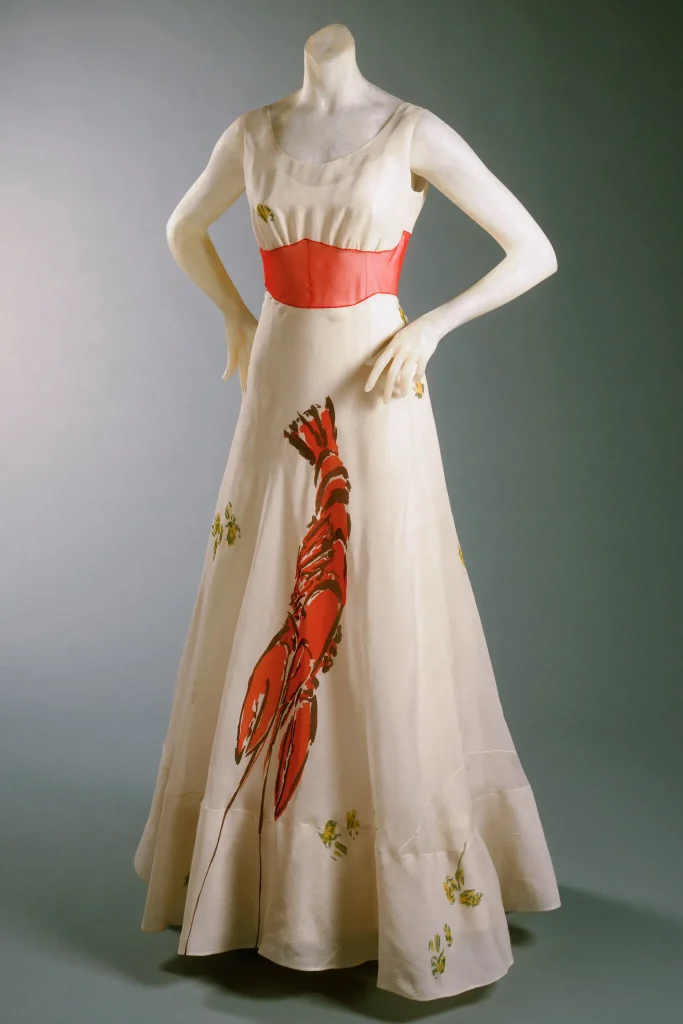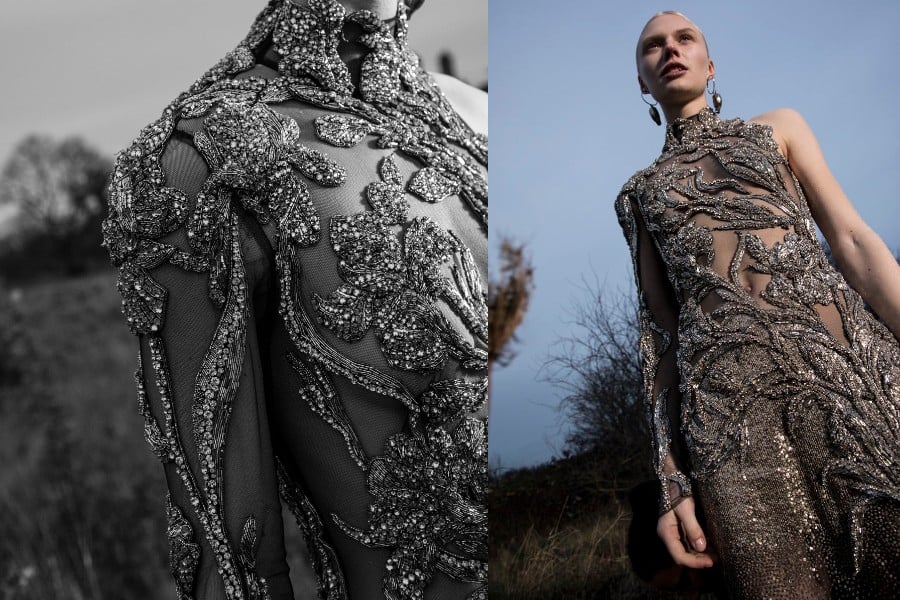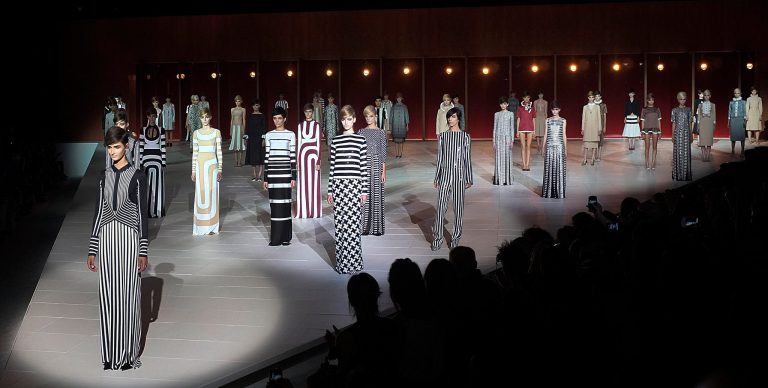


The fusion of art and fashion has always been a source of innovation and creativity. This dynamic relationship has propelled the evolution of fashion, transforming it into a form of expressive artistry. As we delve into the synergy between these two disciplines, we uncover how art movements have significantly influenced fashion trends, shaping the industry and its designs. Historically, fashion has mirrored the artistic currents of its time, absorbing and reflecting the essence of various art movements. From the intricate patterns of Art Nouveau to the bold colors of Pop Art, the influence of art on fashion is unmistakable. This overview sets the stage for understanding how art movements have continuously molded the fashion world, leaving a lasting impact on design aesthetics.
The Impact of Art Nouveau
Art Nouveau, known for its organic lines and natural forms, has left a distinct mark on modern fashion. This movement’s elegant, flowing designs are evident in contemporary fashion pieces that embrace fluidity and grace, emphasizing nature-inspired motifs and curvilinear shapes. Designers like Alexander McQueen and Vivienne Westwood have drawn inspiration from Art Nouveau, incorporating its aesthetic into their collections. Their work showcases the timeless appeal of Art Nouveau, proving its relevance in today’s fashion landscape.
Surrealism and its Fashion Legacy
Surrealism, with its dream-like imagery and unexpected juxtapositions, has influenced fashion with its whimsical and imaginative designs. Fashion often adopts surrealist symbols, infusing garments with a sense of mystery and intrigue that challenges conventional norms. Designers such as Elsa Schiaparelli and Rei Kawakubo have embraced surrealism in their work. Schiaparelli’s collaboration with Salvador Dalí and Kawakubo’s conceptual designs for Comme des Garçons highlight how surrealism continues to inspire fashion, pushing boundaries and encouraging innovation.
The Bauhaus and Functional Fashion
The Bauhaus movement, with its emphasis on functionality and simplicity, intersects with minimalist fashion trends. This movement’s principles are reflected in modern designs that prioritize clean lines, geometric shapes, and a utilitarian approach, emphasizing wearability and practicality. Fashion brands such as COS and Jil Sander have incorporated Bauhaus principles into their collections. Their focus on minimalism, functionality, and a reduced color palette resonates with the Bauhaus ethos, showcasing how this art movement continues to influence contemporary fashion.
Pop Art’s Bold Statements
Pop Art, known for its vibrant colors and bold imagery, has made a significant impact on both streetwear and haute couture. This movement’s influence is evident in apparel that features graphic prints, bright colors, and pop culture references, offering a playful and energetic vibe. Collaborations between artists like Andy Warhol and fashion houses such as Versace have resulted in iconic collections that blend pop art with luxury fashion. These partnerships highlight the seamless integration of art and fashion, creating pieces that are both artistic and wearable.
Abstract Expressionism’s Influence
Abstract Expressionism, characterized by its spontaneous and expressive brushwork, has influenced textile design, introducing abstract patterns and a focus on emotional expression. This art movement’s impact is visible in fabrics that feature bold strokes and vibrant colors, evoking a sense of depth and emotion. Designers like Raf Simons and Marc Jacobs have drawn inspiration from Abstract Expressionism, infusing their collections with the movement’s energetic and emotive qualities. Their use of abstract patterns and expressive color palettes demonstrates the ongoing influence of this art movement in fashion.
Minimalism
Minimalism, with its “less is more” philosophy, has risen to prominence in contemporary fashion. This movement emphasizes simplicity, clean lines, and a monochromatic color scheme, offering a sophisticated and understated aesthetic that appeals to modern sensibilities. Designers such as Phoebe Philo for Céline and Calvin Klein have championed minimalist design, creating collections that embody the essence of simplicity and elegance. Their work exemplifies the minimalist approach, prioritizing form, function, and refined beauty.
Forward-Thinking Fashion
Futurism, with its forward-thinking ethos, has inspired fashion to embrace innovative materials and silhouettes. This movement’s influence is seen in designs that incorporate cutting-edge textiles, metallic finishes, and unconventional shapes, pushing the boundaries of traditional fashion. The integration of technology in fashion, such as wearable tech and smart fabrics, reflects the futurist desire to merge fashion with innovation. Designers like Iris van Herpen and Hussein Chalayan are at the forefront of this trend, experimenting with 3D printing and interactive garments that redefine the possibilities of fashion.
Cultural and Social Impacts
Art movements not only influence fashion aesthetics but also serve as reflections of social change and cultural shifts. Fashion, in turn, adapts to these artistic revolutions, incorporating elements that resonate with contemporary societal values and concerns, such as sustainability and inclusivity. Fashion’s response to artistic revolutions is evident in its adaptability and continuous evolution. By embracing the principles and aesthetics of various art movements, fashion not only pays homage to artistic heritage but also paves the way for future innovations, ensuring its relevance in an ever-changing world.
Conclusion
The intersection of art and fashion is a dynamic and ever-evolving space where creativity knows no bounds. As art movements continue to inspire and revolutionize the fashion world, this synergy fosters a fertile ground for innovation and expression, enriching both disciplines. The enduring legacy of art movements in fashion trends is a testament to the timeless influence of art on fashion. As we look forward, the fusion of art and fashion promises to continue shaping trends, challenging conventions, and inspiring future generations of designers and artists, ensuring the perpetual reinvention of fashion as a form of art.

